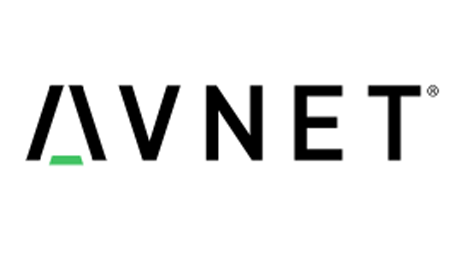Avnet – MACSO Technologies and Avnet Enter Strategic Relationship
Delivers AI models enabling real-time notifications
PHOENIX – Avnet (Nasdaq: AVT) and MACSO Technologies have entered a strategic relationship to accelerate and scale IoT deployments for customers worldwide by advancing artificial intelligence (AI) models on hardware and electronic components through Avnet’s IoTConnect Partner Program.
MACSO trains advanced artificial intelligence models that can simultaneously use different types of sensors on Avnet’s components.
“MACSO is making hardware smart by putting AI models on it,” said MACSO founder and CEO Saba Samiei. “It’s like a CCTV camera directly notifying you if an intruder is going up a flight of stairs instead of watching people and requiring a human to go back and watch a video to make decisions. We are trying to make sensors smart.”
In the short term, MACSO’s AI is focusing on audio and air quality. As the platform grows, other capabilities such as vision, temperature and pressure can be added.
“The problem is that unless you have a good technical understanding of AI, creating models is very hard,” Samiei says. “What we are doing is building AI models and licensing them, so we are taking all that heavy lifting off the customer – all they do is subscribe to the AI models and pay for the subscription.”
Avnet is extending the value of distribution to make IoT accessible and scalable for original equipment manufacturers (OEMs) by providing hardware, software and engineering/consulting/cloud services.
“Our customers are exploring the use of AI-enabled devices to improve data-driven business outcomes. Our collaboration with MACSO will enable fast deployment of these systems leveraging AI,” said Avnet’s Senior Director, Supplier Technology Enablement, Jennifer Skinner-Gray.
Avnet’s IoTConnect Partner Program enables OEMs and independent design houses (IDHs) to build new solutions and service models for their practice using Avnet’s IoTConnect platform. Avnet’s knowledge of the edge along with the significant investment in cloud, digital and software services coupled with the members of the IoTConnect Partner Program allow Avnet to collaboratively leverage solutions to scale and maximize opportunities.
SourceAvnet
EMR Analysis
More information on Avnet: See the full profile on EMR Executive Services
More information on Phil Gallagher (Chief Executive Officer, Avnet): See the full profile on EMR Executive Services
More information on Ken Jacobson (Chief Financial Officer, Avnet): See the full profile on EMR Executive Services
More information on Jennifer Skinner-Gray (Senior Director, Supplier Technology Enablement, Avnet): See the full profile on EMR Executive Services
More information on Multicomp Pro by Avnet: See the full profile on EMR Executive Services
More information on Farnell (Farnell, Newark, element14): See the full profile on EMR Executive Services
More information on Rebeca Obregon-Jimenez (President, Farnell, Avnet): See the full profile on EMR Executive Services
More information on IoTConnect Partner Program by Avnet: https://docs.iotconnect.io/ + The IoT Partner Program helps partners grow their business by developing and deploying IoT solutions. It offers a variety of benefits, including, easy device management and authentication, C2D and D2C communication, and more. Partner Program aims to help businesses reach new customers and markets, increase sales and revenue, reduce costs and improve margins and build a strong brand reputation.
More information on MACSO Technologies: https://www.macso.ai/ + Pioneering Sensory AI integration for hardware companies, offering comprehensive solutions from data collection and engineering to model development and deployment.
Leading the transformation of industries through AI solutions and strategic partnerships. With Macso you can add competitive advantage to your hardware by seamlessly integrating machine learning and making data-driven innovation accessible to all.
Headquartered in New Zealand, MACSO has created a highly scalable artificial intelligence platform that works with sensors to remotely monitor customers’ operating environments. The platform consists of a proprietary data collection and processing tool that enables MACSO to create a database of reference events tailored for each specific use case. Our library of advanced and proprietary AI Algorithms separates relevant signals from live data streams and turn those signals into actionable insights. MACSO’s algorithms are deployable in the cloud and on the edge, enabling hardware companies to scale quickly and enabling a safer world by creating portable intelligence.
MACSO whose technology is currently present on 4 continents, has a track record of success in deploying AI in Animal Health Monitoring and Air Quality Monitoring.
More information on Saba Samiei (Founder and Chief Executive Officer, MASCO): https://www.macso.ai/about-us2 + https://www.linkedin.com/in/saba-samiei-%F0%9F%A6%84-7891b548/
EMR Additional Notes:
- AI – Artificial Intelligence:
- https://searchenterpriseai.techtarget.com/definition/AI-Artificial-Intelligence +
- Artificial intelligence is the simulation of human intelligence processes by machines, especially computer systems.
- As the hype around AI has accelerated, vendors have been scrambling to promote how their products and services use AI. Often what they refer to as AI is simply one component of AI, such as machine learning. AI requires a foundation of specialized hardware and software for writing and training machine learning algorithms. No one programming language is synonymous with AI, but well a few, including Python, R and Java, are popular.
- In general, AI systems work by ingesting large amounts of labeled training data, analyzing the data for correlations and patterns, and using these patterns to make predictions about future states. In this way, a chatbot that is fed examples of text chats can learn to produce lifelike exchanges with people, or an image recognition tool can learn to identify and describe objects in images by reviewing millions of examples.
- AI programming focuses on three cognitive skills: learning, reasoning and self-correction.
- What are the 4 types of artificial intelligence?
- Type 1: Reactive machines. These AI systems have no memory and are task specific. An example is Deep Blue, the IBM chess program that beat Garry Kasparov in the 1990s. Deep Blue can identify pieces on the chessboard and make predictions, but because it has no memory, it cannot use past experiences to inform future ones.
- Type 2: Limited memory. These AI systems have memory, so they can use past experiences to inform future decisions. Some of the decision-making functions in self-driving cars are designed this way.
- Type 3: Theory of mind. Theory of mind is a psychology term. When applied to AI, it means that the system would have the social intelligence to understand emotions. This type of AI will be able to infer human intentions and predict behavior, a necessary skill for AI systems to become integral members of human teams.
- Type 4: Self-awareness. In this category, AI systems have a sense of self, which gives them consciousness. Machines with self-awareness understand their own current state. This type of AI does not yet exist.
- Machine Learning (ML):
- Developed to mimic human intelligence, it lets the machines learn independently by ingesting vast amounts of data, statistics formulas and detecting patterns.
- ML allows software applications to become more accurate at predicting outcomes without being explicitly programmed to do so.
- ML algorithms use historical data as input to predict new output values.
- Recommendation engines are a common use case for ML. Other uses include fraud detection, spam filtering, business process automation (BPA) and predictive maintenance.
- Classical ML is often categorized by how an algorithm learns to become more accurate in its predictions. There are four basic approaches: supervised learning, unsupervised learning, semi-supervised learning and reinforcement learning.
- Deep Learning (DL):
- Subset of machine learning, Deep Learning enabled much smarter results than were originally possible with ML. Face recognition is a good example.
- DL makes use of layers of information processing, each gradually learning more and more complex representations of data. The early layers may learn about colors, the next ones about shapes, the following about combinations of those shapes, and finally actual objects. DL demonstrated a breakthrough in object recognition.
- DL is currently the most sophisticated AI architecture we have developed.
- Computer Vision (CV):
- Computer vision is a field of artificial intelligence that enables computers and systems to derive meaningful information from digital images, videos and other visual inputs — and take actions or make recommendations based on that information.
- The most well-known case of this today is Google’s Translate, which can take an image of anything — from menus to signboards — and convert it into text that the program then translates into the user’s native language.
- Machine Vision (MV):
- Machine Vision is the ability of a computer to see; it employs one or more video cameras, analog-to-digital conversion and digital signal processing. The resulting data goes to a computer or robot controller. Machine Vision is similar in complexity to Voice Recognition.
- MV uses the latest AI technologies to give industrial equipment the ability to see and analyze tasks in smart manufacturing, quality control, and worker safety.
- Computer Vision systems can gain valuable information from images, videos, and other visuals, whereas Machine Vision systems rely on the image captured by the system’s camera. Another difference is that Computer Vision systems are commonly used to extract and use as much data as possible about an object.
- Generative AI (GenAI):
- Generative AI technology generates outputs based on some kind of input – often a prompt supplied by a person. Some GenAI tools work in one medium, such as turning text inputs into text outputs, for example. With the public release of ChatGPT in late November 2022, the world at large was introduced to an AI app capable of creating text that sounded more authentic and less artificial than any previous generation of computer-crafted text.
- https://searchenterpriseai.techtarget.com/definition/AI-Artificial-Intelligence +
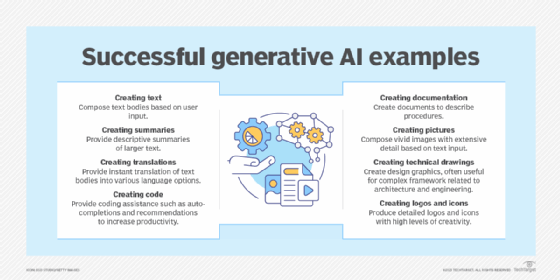
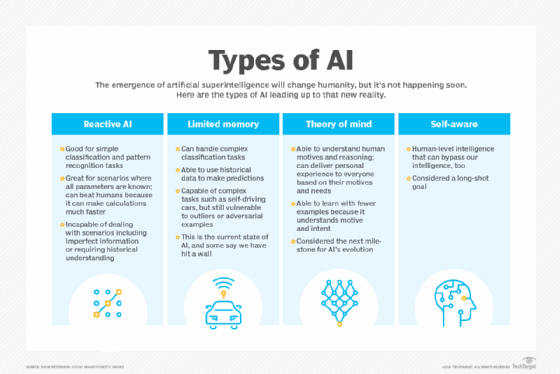
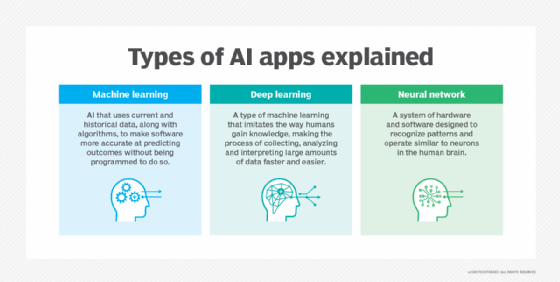
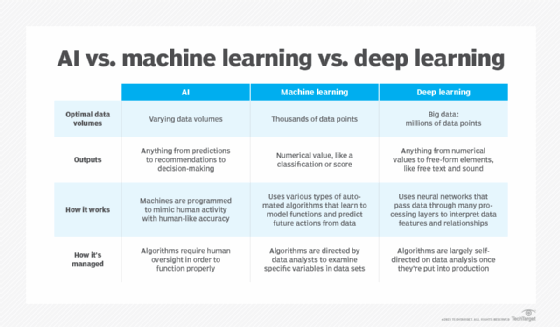
- Edge AI Technology:
- Edge artificial intelligence refers to the deployment of AI algorithms and AI models directly on local edge devices such as sensors or Internet of Things (IoT) devices, which enables real-time data processing and analysis without constant reliance on cloud infrastructure.
- Simply stated, edge AI, or “AI on the edge“, refers to the combination of edge computing and artificial intelligence to execute machine learning tasks directly on interconnected edge devices. Edge computing allows for data to be stored close to the device location, and AI algorithms enable the data to be processed right on the network edge, with or without an internet connection. This facilitates the processing of data within milliseconds, providing real-time feedback.
- Self-driving cars, wearable devices, security cameras, and smart home appliances are among the technologies that leverage edge AI capabilities to promptly deliver users with real-time information when it is most essential.
- IOT (The Internet Of Things):
- The Internet of Things (IoT) refers to a system of interrelated, internet-connected objects that are able to collect and transfer data over a wireless network without human intervention.
- Describes the network of physical objects—“things”—that are embedded with sensors, software, and other technologies for the purpose of connecting and exchanging data with other devices and systems over the internet.
- The Most Popular IoT Devices are:
- Smart watches are the most popular IoT devices. …
- Gaming consoles. …
- Smart TV sets and content streaming devices. …
- Voice control devices. …
- Printers. …
- Cameras. …
- Lighting appliances. …
- Smart thermostats.
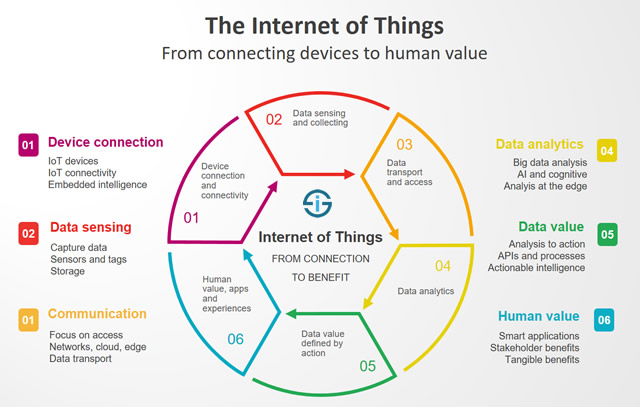
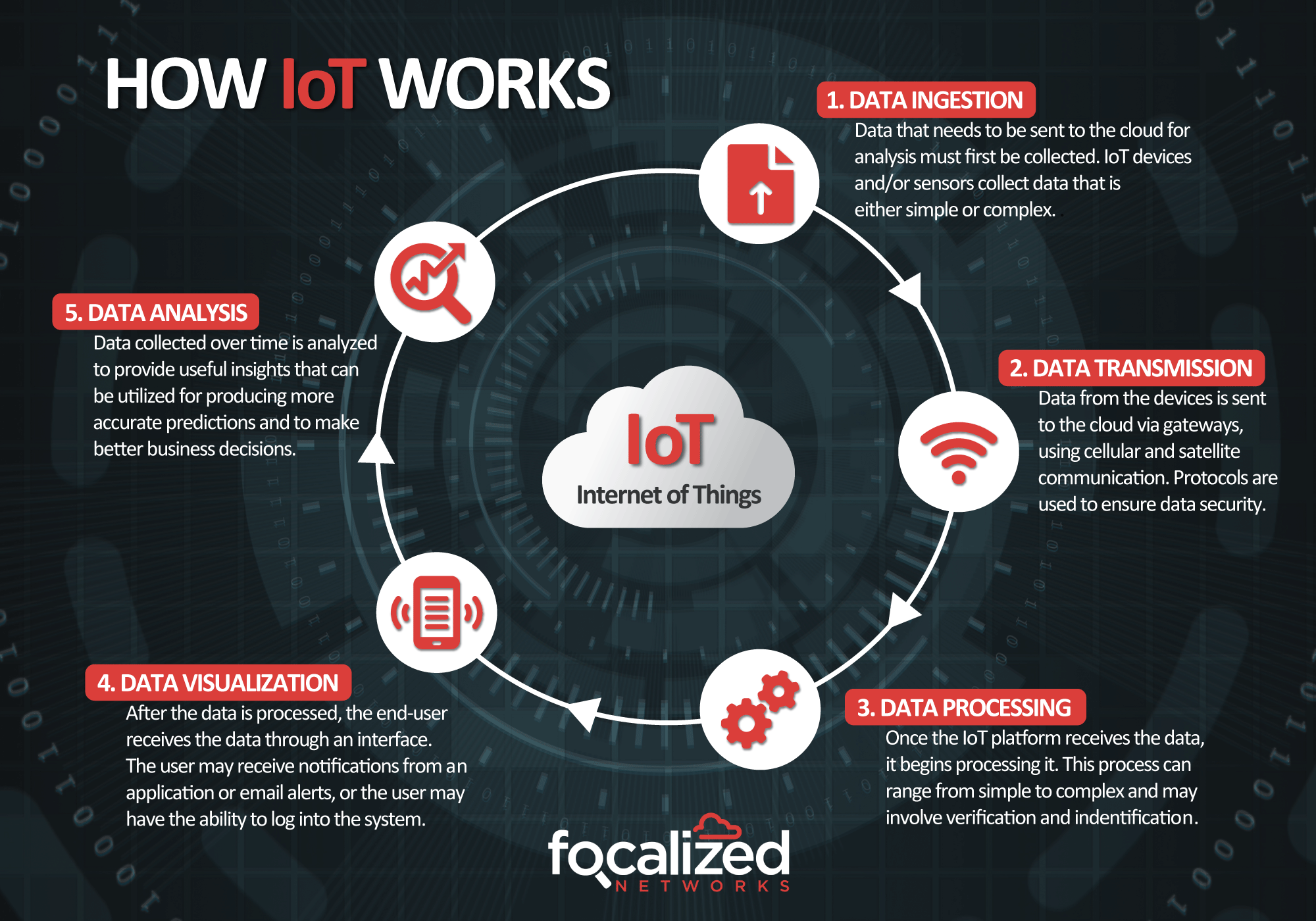
- Industrial IoT Solutions:
- Industrial IoT (IIoT) involves collecting and analyzing sensor-generated data to support equipment monitoring and maintenance, production process analytics and control, and more. In manufacturing IT since 1989, ScienceSoft offers IIoT consulting and development to create secure IIoT solutions.
- CCTV:
- CCTV (closed-circuit television) is a TV system in which signals are not publicly distributed but are monitored, primarily for surveillance and security purposes.
- CCTV works by the camera or cameras taking a constant sequence of images that are then transmitted by cable or wirelessly (depending on the chosen system type) to the recording device and then on to the display monitor, which enables an individual to see the sequence of images as video footage.
- OEM (Original Equipment Manufacturer):
- Company that produces parts and equipment that may be marketed by another manufacturer.
- Usually tagged on hardware or software that’s less expensive than normal retail products.
- An OEM refers to something made specifically for the original product, while the aftermarket refers to equipment made by another company that a consumer may use as a replacement.
- Electrical OEM manufacturers makes equipment or components that are then utilized by its customer, another manufacturer or a reseller, usually under the final reseller’s brand name. OEMs come in many shapes and sizes, making complete devices or specific components.
- MRO (Maintenance, Repair and Operations):
- It refers to all the activities needed to keep a company’s facilities and production processes running smoothly.
- Supplies consumed in the production process that do not become part of the end product.
- Maintenance professionals use MRO items to maintain company structures, equipment, and assets. Purchases that fall under MRO include maintenance tools and equipment, replacement parts for production equipment, consumables such as personal protective equipment (e.g., safety goggles, work gloves), cleaning products and office supplies.
- Integrated Supply:
- Integrated supply chain management refers to an enterprise resource planning approach to supply chain management.
- Large-scale business strategy that brings as many links of the chain as possible into a closer working relationship with each other. The goal is to improve response time, production time, and reduce costs and waste.
- Often takes the form of integrated computer systems. For example, the supplier’s computer system may be set up to deliver real-time data to the buyer’s computer. This allows the buyer to know: The current status of all orders., which products are in the supplier’s inventory …
- Integration, operations, purchasing and distribution are the four elements of the supply chain that work together to establish a path to competition that is both cost-effective and competitive.
- Integrated supply is the end-to-end process of managing the MRO supply chain (spare parts) through consolidated sourcing practices, storeroom operations, inventory management, data governance, and continuous improvement. The objective is to leverage spend, reduce transactions, and cut inventory and associated costs while eliminating risk around critical spares.

